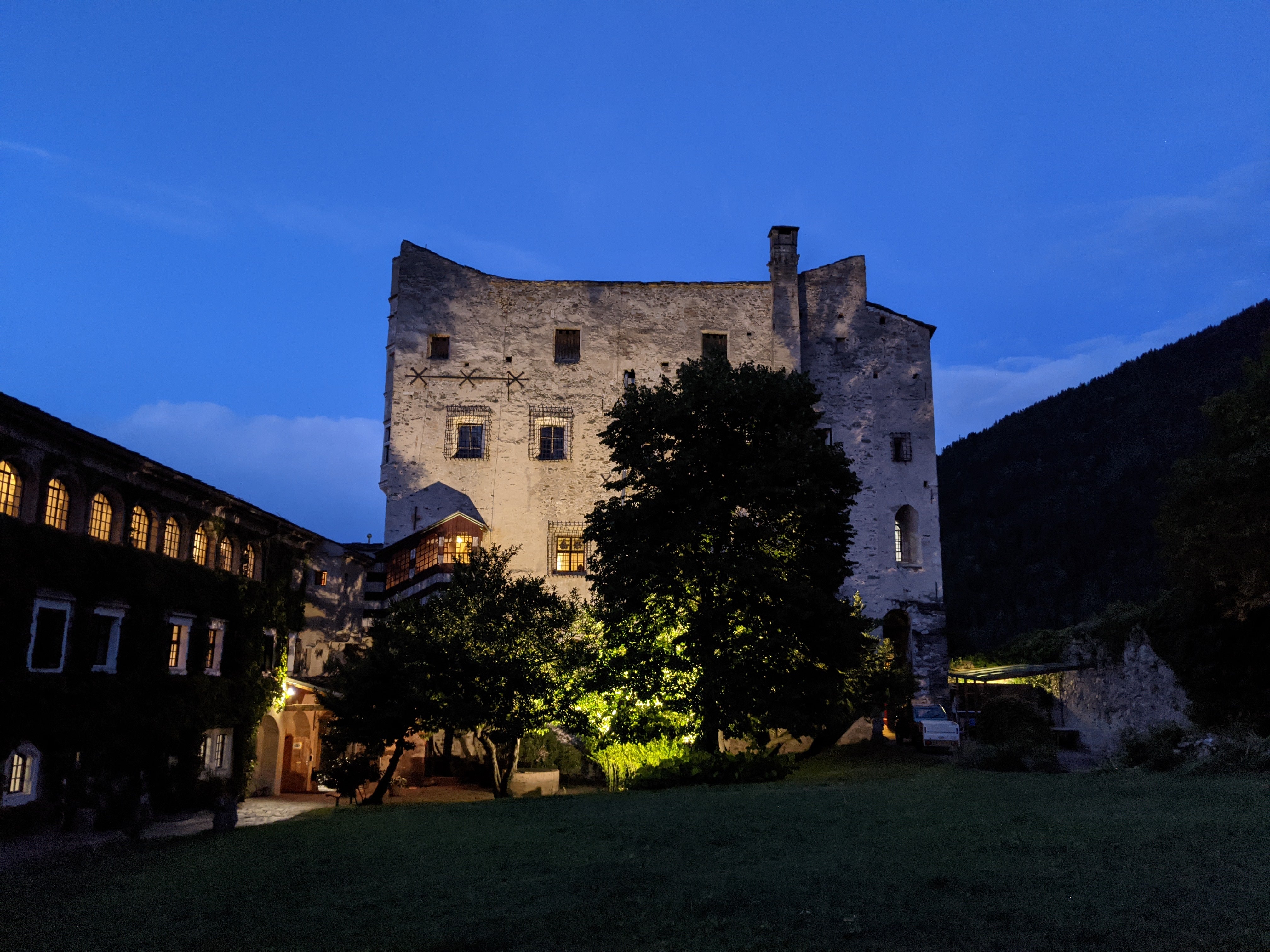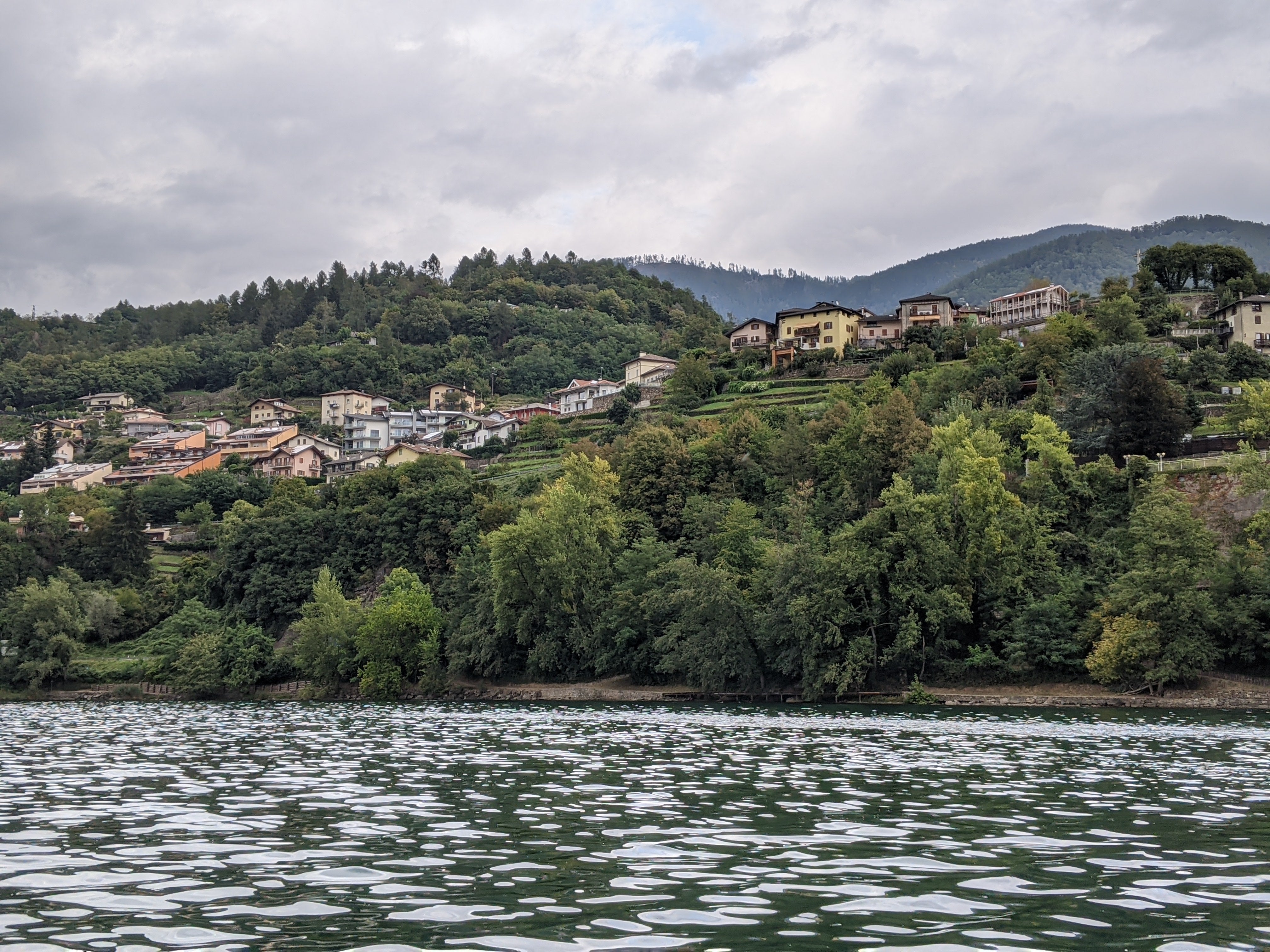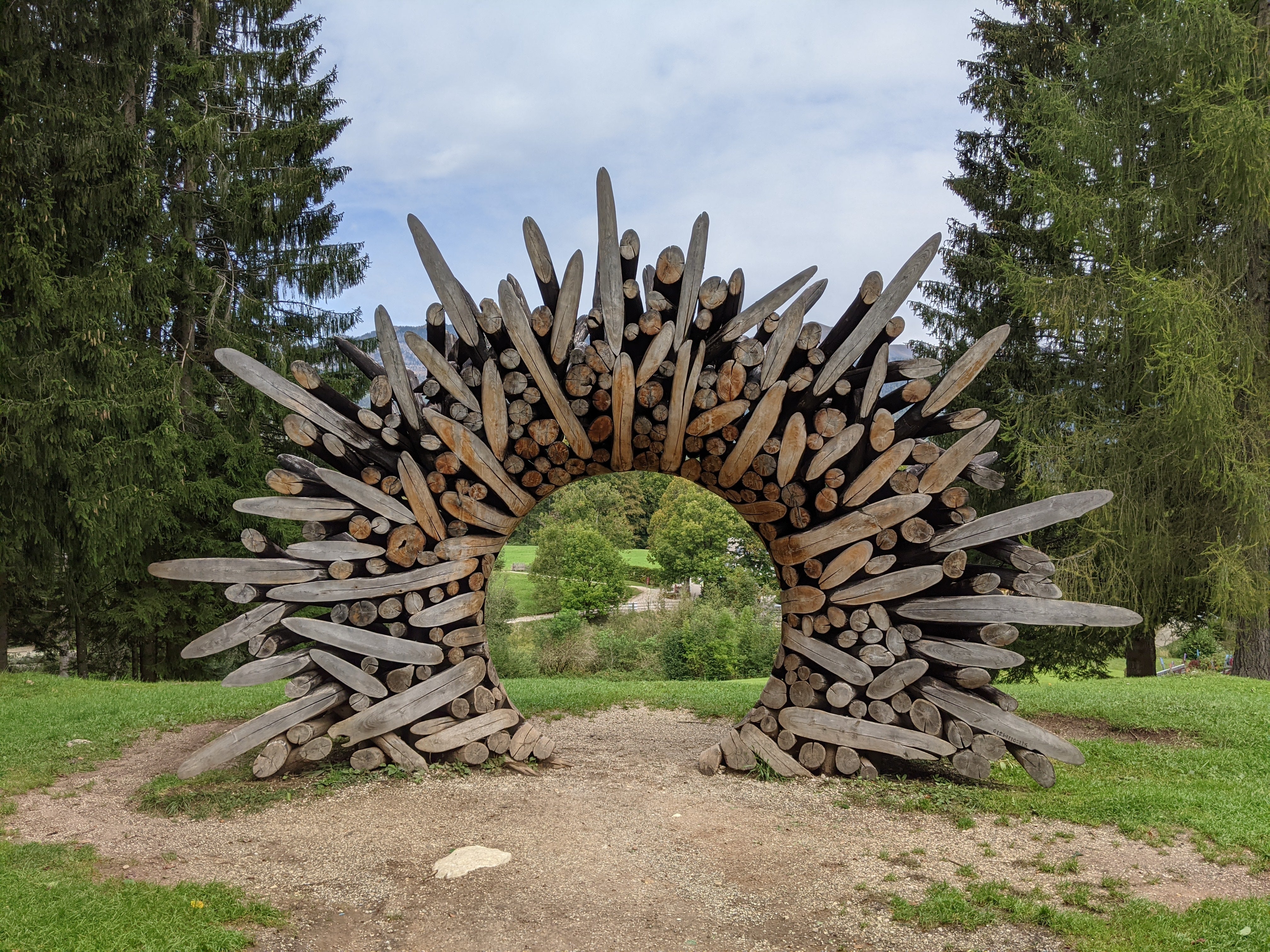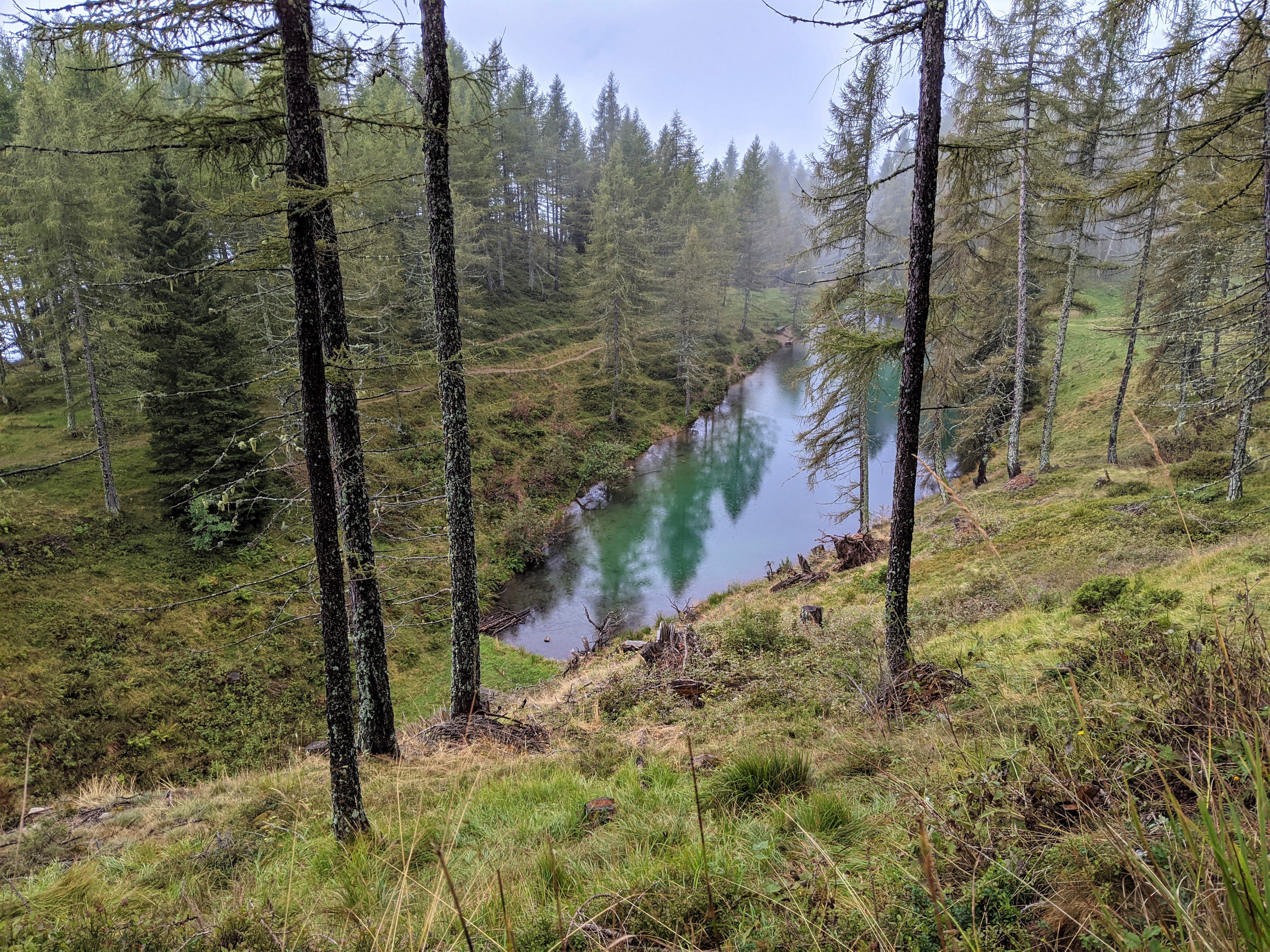“Touch the label,” says Andrea Romanese, as he offers the bottle of blush rosé around the table. He cradles its neck in one hand, the body resting against his arm, as if he’s not quite ready to part with it. I lean forward and do as I’m told, tracing the faint bumps with my fingers. It’s a simple design: a Picasso-esque sketch of a face in bold, black lines, set against a plain white background. Beneath it, the name Gabriella, printed in a demure font, refuses to betray the secret of the bottle.
We’ve been at Cantina Romanese – a small winery in the Italian province of Trentino – for the best part of an hour. Most people come to the Cantina to try Lagorai, a sparkling wine named after a nearby mountain chain that’s aged under the cool waters of Lake Levico. But as Andrea, who runs the winery with his brother Giorgio, regales us with Romanese lore, it’s soon clear that their most interesting wines have stronger ties to the family.
Several varieties are named after family members. Among them are Narciso, a bold, red representing their grandfather; Laetitia, an elegant white wine named after their grandmother; and Fides, a robust chardonnay that takes after their great grandmother. But every time we got to Gabriella, he would furtively brush questions aside.

Now that we’re sitting down in their charming little courtyard, each with a full glass in hand, Andrea is finally ready. “Gabriella is my mother,” he begins, his voice faltering. “She passed away when my brother was very young, so he drew this label from his memory of her.”
As Andrea tells the story behind the design, the wine we’re sipping starts to take on an ethereal quality. Soon, each of us is fighting to stop the tears from brimming over into our glass. The label isn’t just a tribute to his late mother, he explains, it’s also a nod to the fact that their grandfather had lost his sight before his daughter was born. Narciso never got to see Gabriella, but her namesake wine’s label means that a new generation will.
As Andrea tells the story behind the design, the wine we’re sipping starts to take on an ethereal quality
In the spirit of easing myself back into travelling, post-lockdown, I had come to Trentino’s Valsugana (Sugana Valley) to escape the crowds - but I hadn’t anticipated stumbling so quickly into such an intense, emotional scene.
Valsugana, it turned out, had quite a few surprises for me. Normally, this part of Italy is forgotten by British travellers, many of whom opt for its flashier neighbour, South Tyrol. But the pandemic has propelled people to look for lesser-visited stretches of Europe in which to immerse themselves in nature – myself included. And Valsugana, with its healing lakes and unblemished forests, had nature in abundance.
Wilderness, yes, but also wine. A winemaking region of some distinction – Wine Enthusiast magazine named it 2020’s wine region of the year – Trentino has dozens of charming wineries you can visit. It should also take Lombardy’s crown as Italy’s Lake District - the autonomous region is home to some 300 lakes, many of them tiny and tucked away in the Alps, though you’ll know the jewel in its crown, Lake Garda.

In Valsugana, the lakes of Caldonazzo and Levico virtually sit side by side. In summer they’re a major draw for Italians escaping the cities, but during the shoulder seasons of spring and autumn, there’s almost no one around (though still plenty to do).
Caldonazzo is the bigger of the two, and it’s here that you can learn to sail, or even water ski. On cooler days, hop on an e-bike and you can effortlessly cover much of the lake’s perimeter in an hour. There are plenty of lovely restaurants along the waterfront, too, for refreshing pit-stops.
Roman soldiers are said to have rested by Lake Levico, to access the healing properties of its thermal spring waters
Levico, the smaller of the two lakes, is much better suited for hikers – setting off on foot is the only way to reach the most picturesque spots adorning its edge. But you’ll get the most out of it by plunging into the water, whether that’s on a kayak or paddleboard, or taking a refreshing swim. The Romans understood this – their soldiers are said to have rested here to access the healing properties of its thermal spring waters, which are still used in local spas today.
If the lakes get busier than you’d like, you can always head for the hills – the mountains around Valsugana offer endless walking trails to suit all abilities. From Rifugio Serot, one of the mountain huts on Lagorai, you can do a circuit trail that takes a couple of hours – perhaps encountering a deer or two before returning to base for a hearty lunch. But you can just as easily make a day of it by heading further up and visiting some of the forts and trenches that mark the final frontier of the Austro-Hungarian Empire – reminders of the First World War, before the region was annexed to Italy.

For an even gentler stroll, seek out Arte Sella. An ever-growing project that’s been 30 years in the making, this sculpture-garden-meets-woodland-trail has outdoor installations by artists from all over the world. The idea is to blend the art into nature. The Invisible Woman – a human form fashioned out of wires – does this so well, you’ll barely notice it until the light falls on it just so.
Between afternoons soaking up nature and nights being fed generously, I was completely exhausted after just a few days. But that’s no criticism – in Valsugana, I slept through the night for the first time in months. No distractions to keep me awake, no city noise to disturb my slumber and no worries to wake up to. I guess the restorative powers that healed those battle-worn Romans millennia ago had worked their wonders on my pandemic-frazzled soul.
Travel essentials
Getting there
British Airways flies from London Heathrow to Verona from around £70 return. From there, it’s about an hour and half drive to Valsugana. The slower scenic route is around two hours.
Staying there
Villa Margherita has doubles from £86, room only.
More information
For more ideas on what to do in the region, see visittrentino.info and visitvalsugana.it.








Join our commenting forum
Join thought-provoking conversations, follow other Independent readers and see their replies
Comments